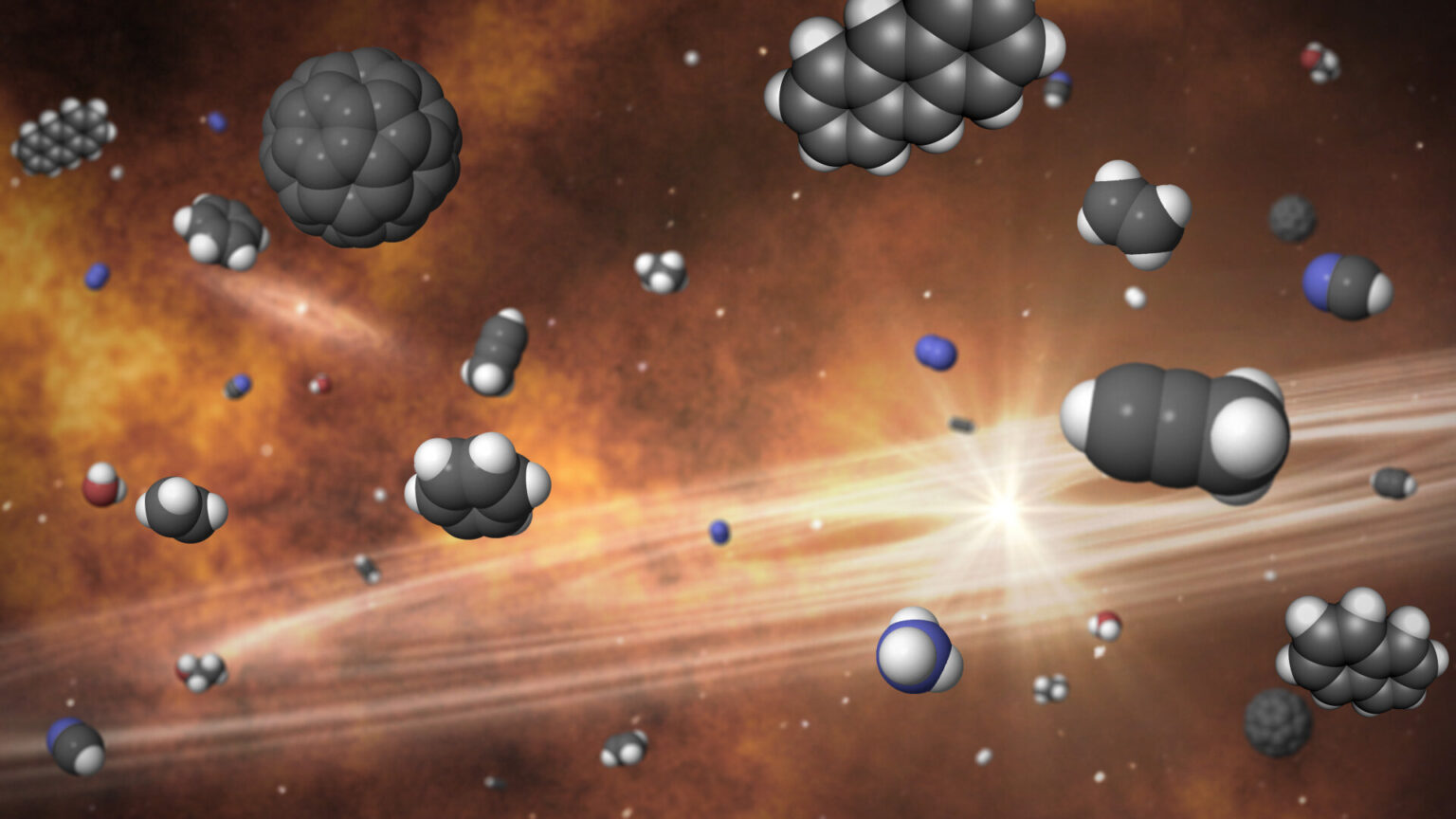Scientists have found that in the Perseus Cloud, which is a young region of star formation near us, there are organic molecules that are components of living cells. There are newborn planets next to them, so they can fall on them like a meteor shower.

“Molecules of life” in the Perseus cloud
Susan Iglesias-Groth, of the Instituto de Astrofísica de Canarias (IAC) and Martina Marín-Dobrincicof the Polytechnic University of Cartagena found a huge number of organic molecules in the field of star formation IC348. It is also known as the Perseus molecular cloud and is the closest such object to us.
The Perseus Cloud is a very young formation. It is no more than 2-3 million years old. Despite this, the first stars and protoplanetary disks have already begun to form in it. And it is here that researchers have discovered substances that are a kind of “bricks” from which ribonucleic acids and proteins are built.
Interestingly, the same Susan Iglesias-Groth of 2019 already made an amazing discovery in this very Perseus cloud. Then she found fullerenes there. These large inorganic molecules are a special form of carbon. However, now the discovery looks even more intriguing.
Rain of organic molecules
A new study has revealed fairly common molecules in the interior of this region, such as molecular molecular hydrogen (H2), hydroxyl (OH), water (H2O), carbon dioxide (CO2) and ammonia (NH3), as well as several substances containing carbon, and may play an important role in the production of more complex hydrocarbons and prebiotic molecules such as hydrogen cyanide (HCN), acetylene (C2H2), diacetylene (C4H2), cyanoacetylene (HC3N), cyanobutadiyne (HC5N), ethane (C2H6), hexatrine (C6H2) and benzene (C6H6).
The data also show the presence of more complex molecules, such as polycyclic armoatic hydrocarbons (PAH) and the fullerenes C60 and C70. The most interesting thing is that all this is located directly next to the star systems that are just forming.
Previously, scientists have already found “molecules of life” in gas and dust clouds. They are also present in meteorites. In addition, scientists know that their synthesis is possible directly in space. And that is why scientists are so interested in the possibility of getting these substances on newborn planets.
Geological studies on Earth indicate that the appearance of the first living beings on it is rapid, and precellular evolution does not last very long. Perhaps the reason for this is that a rain of ready-made “bricks of life” falls on newborn planets.
According to phys.org
Follow us on Twitter to get the most interesting space news in time
https://twitter.com/ust_magazine

